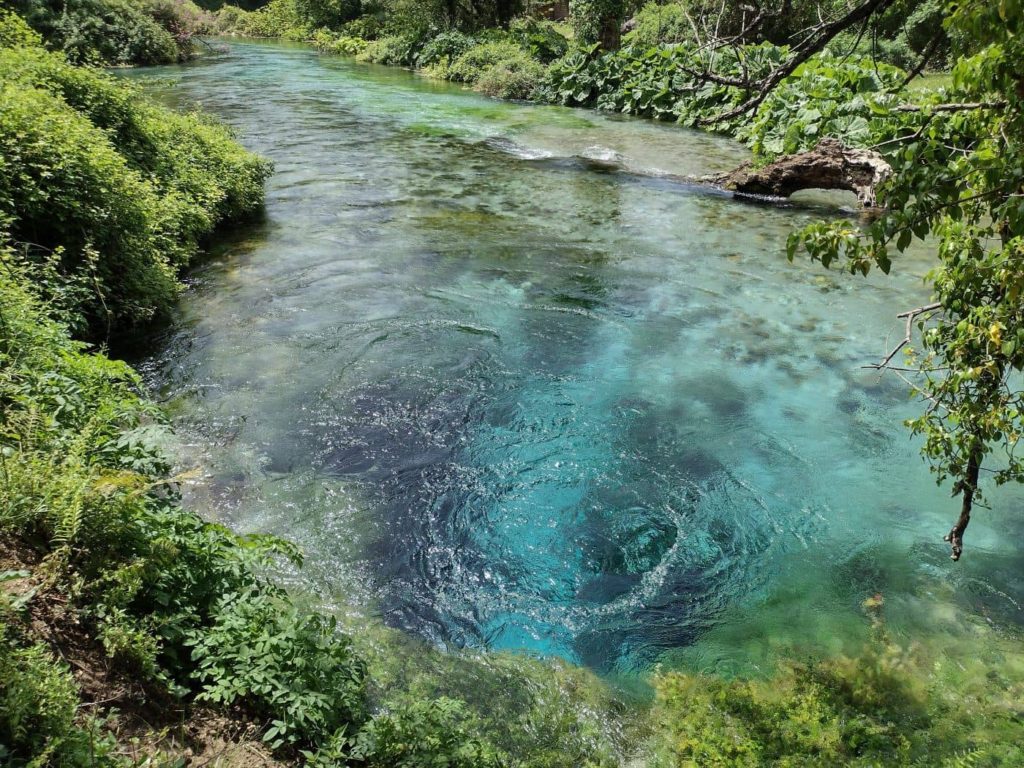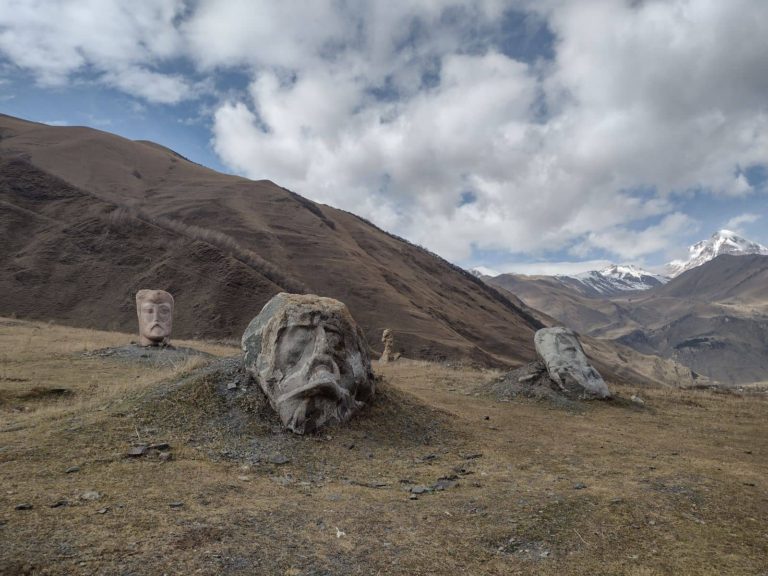The Blue Eye appears amid a dry Mediterranean landscape with clear turquoise waters and a lush green setting. The colorful natural spring has long been known as one of Albania’s best-kept secrets. However, in recent years it has become a mainstay for travelers heading to Sarandë and Gjirokaster.
Also known as “Syri i Kaltër,” the spring’s growing popularity can be attributed to the boom in tourism in Albania and the renovations being done around the nature reserve. The cover that the surrounding oak and sycamore trees provide and the chilly water are also ideal for the hot summer months.
As the main water source for the Bistricë River, the Blue Eye is surprisingly mysterious. Besides the almost identical look of a human iris, the bottom seems to be a never-ending pit. Divers have descended through the bubbles, into the karst hole, and had to turn back after 50 meters. Seems fitting for an icy pool that could double as the eye of a White Walker (Game of Thrones reference anyone?).
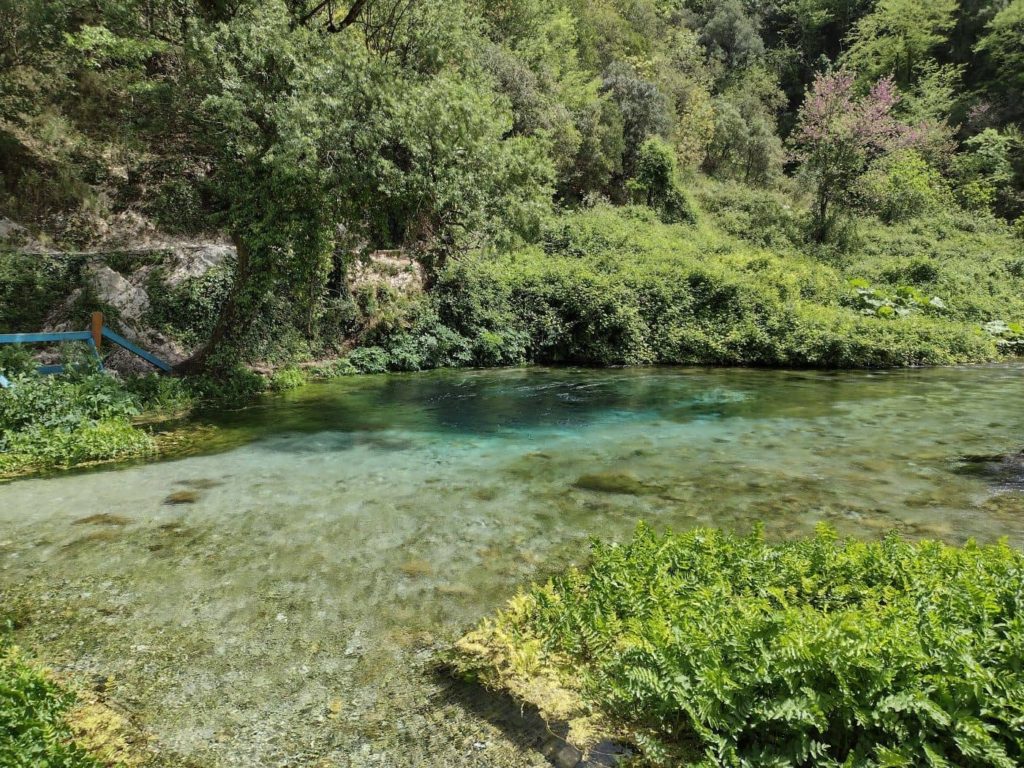
SOME UNEXPECTED WILDLIFE
Watch out if the rocks down by the water seem like they move with every step, your eyes aren’t playing tricks on you. Tons of tiny well-camouflaged frogs call the spring their home. They dart in and out of the water and make entertaining companions for the day.
Besides the frogs, you might run into a snake or some wandering goats. Turtles and tortoises are also known to inhabit this region. Although, I can’t claim to have seen any at the Blue Eye.
Tours | Fancy a tour of the Blue Eye? Options are leaving from Tirana, Durres, Sarandë, and Gjirokaster. Many will combine other sights in Albania, like Lekursi Castle and Ksamil. If you’re interested, you’ll find a variety of choices here and here.
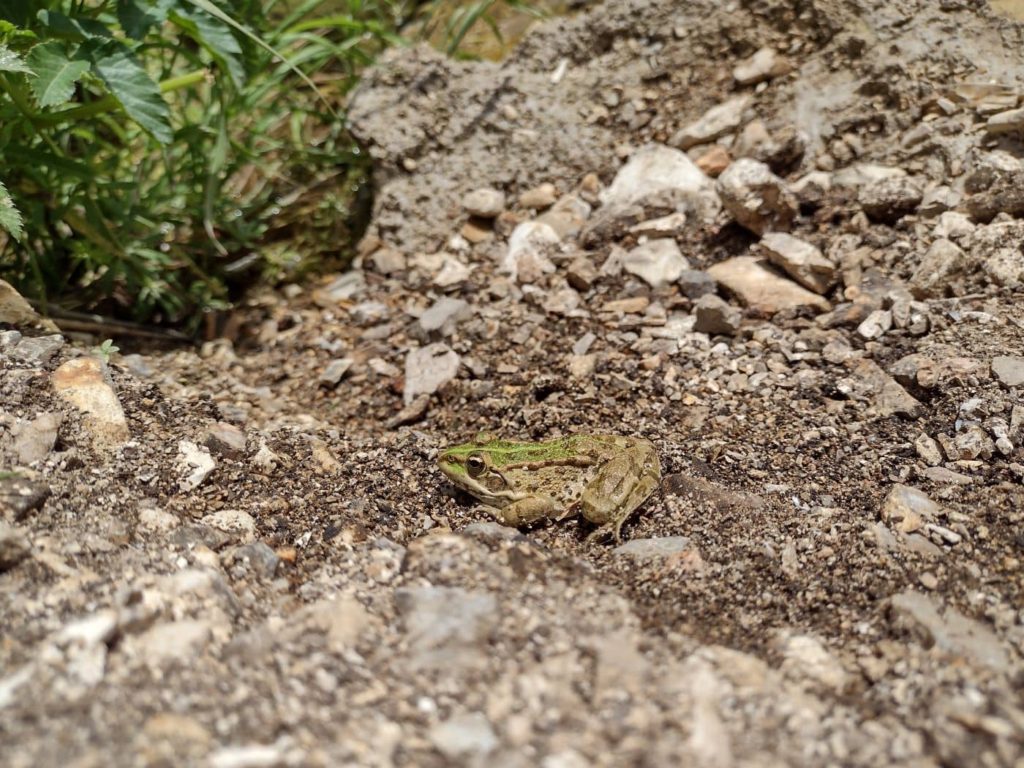
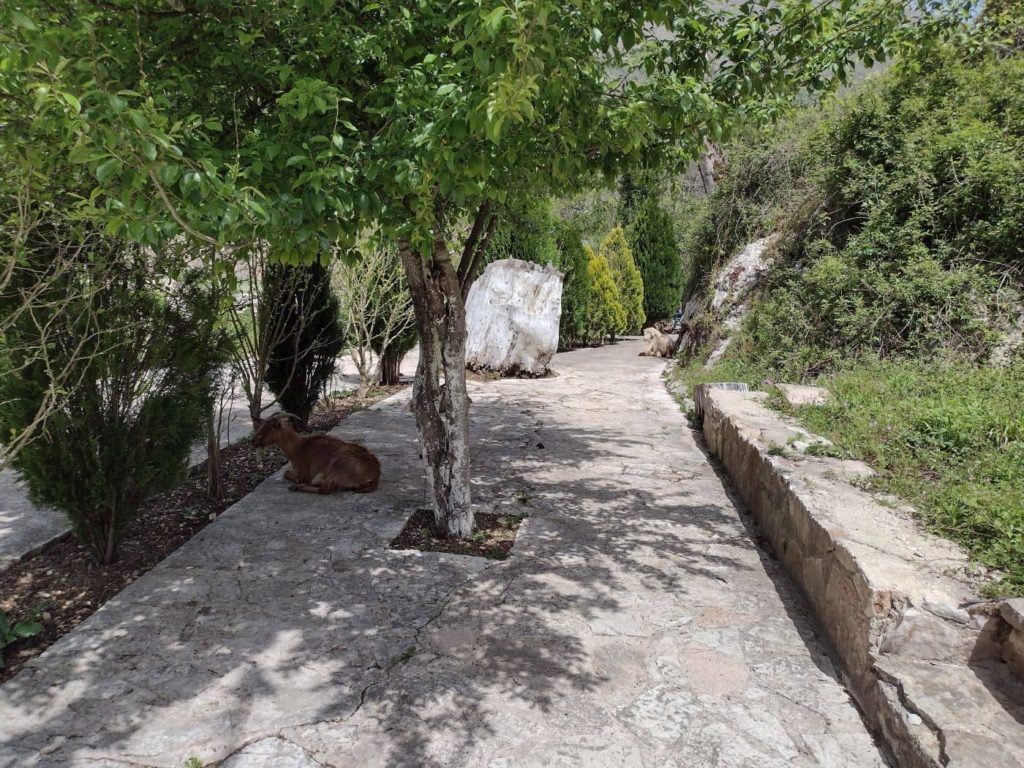
A tiny frog and some lazy goats hanging around the Blue Eye.
The Blue Eye (maps) is located between the two popular destinations of Sarandë and Gjirokaster. From either city, the fresh waters are just a short drive away. It will take you about 30 minutes from Sarandë, and roughly 45 minutes from Gjirokaster.
If you are driving, there are plenty of parking spots. A giant sign on the main road will point you in the direction of the Blue Eye, however, make sure to pay attention. The turn-off is right after a bend in the winding road.
Once you’ve turned off, you’ll head down a small rough road for about 2 miles until you reach the shaded area of the springs.

If you’re taking a bus, just ask the driver to take you to the Blue Eye. They’ll know exactly what you mean as it’s a popular stop for them. From Saranda, you can hop on almost any bus in the direction of Berat, Tirana, or Gjirokaster. They follow the same road that leads to the spring and leave every half hour or so. The ride will cost you between 100 and 400 Lek each way.
The buses from Gjirokaster are a little more sporadic. You’ll have to catch any bus heading in the direction of Saranda. From Gjirokaster, the cost is 200 Lek each way. Both buses will drop you off at the sign I mentioned earlier, so prepare for a 20 to 30-minute walk to and from the spring.
If you don’t have a car or the patience for a bus, you can grab a taxi. In both cities, the streets next to the bus stations have rows of taxi drivers who are happy to take you.
If the bus system seems a little overwhelming, have a look at my “A Detailed Guide to Albania Buses” article. It will help you make sense of all the chaos.
The quick trip to the Blue Eye is something everyone traveling to southern Albania should do. It’s a wonderful way to spend a day and the perfect way to see a little slice of the country’s beautiful nature.


